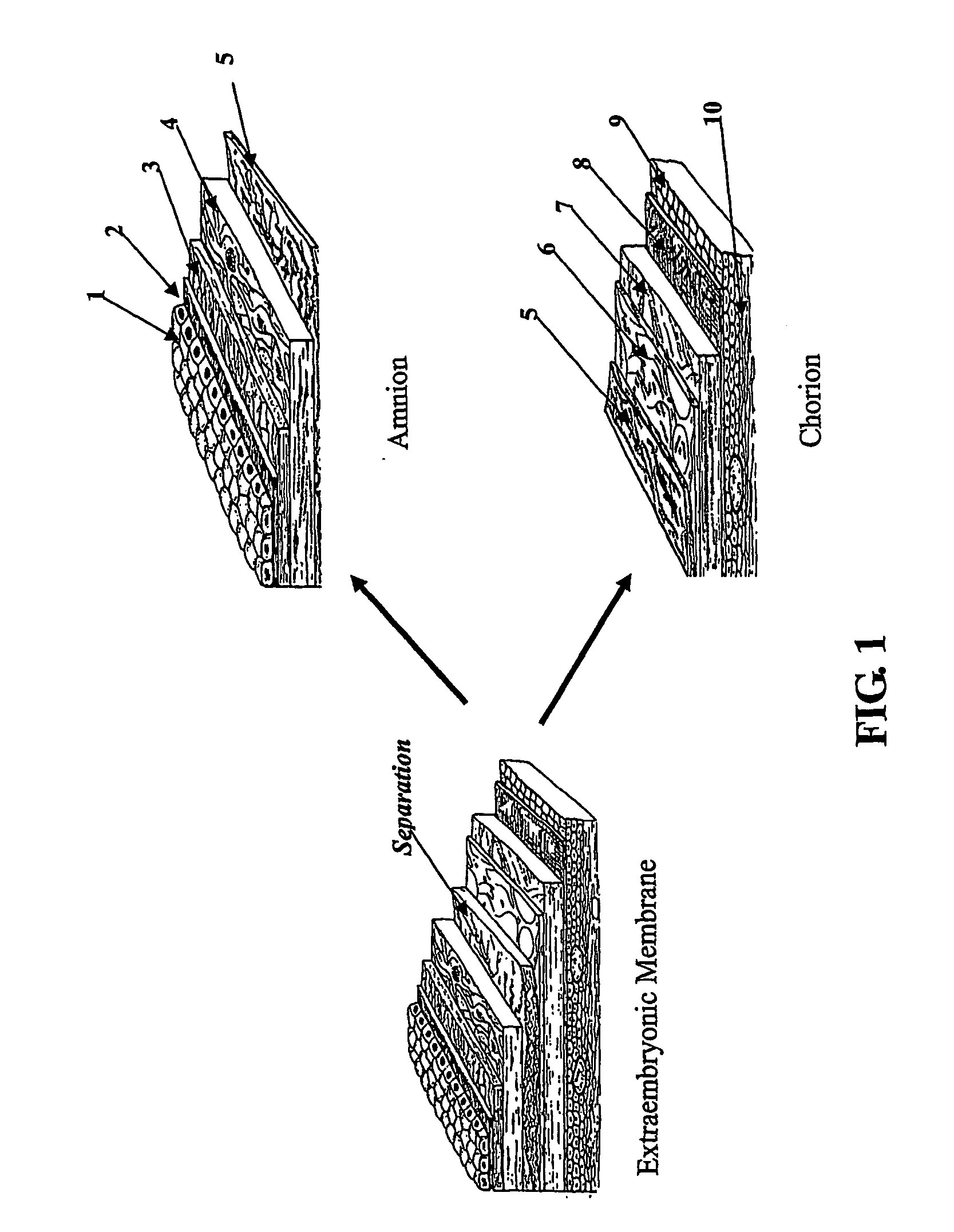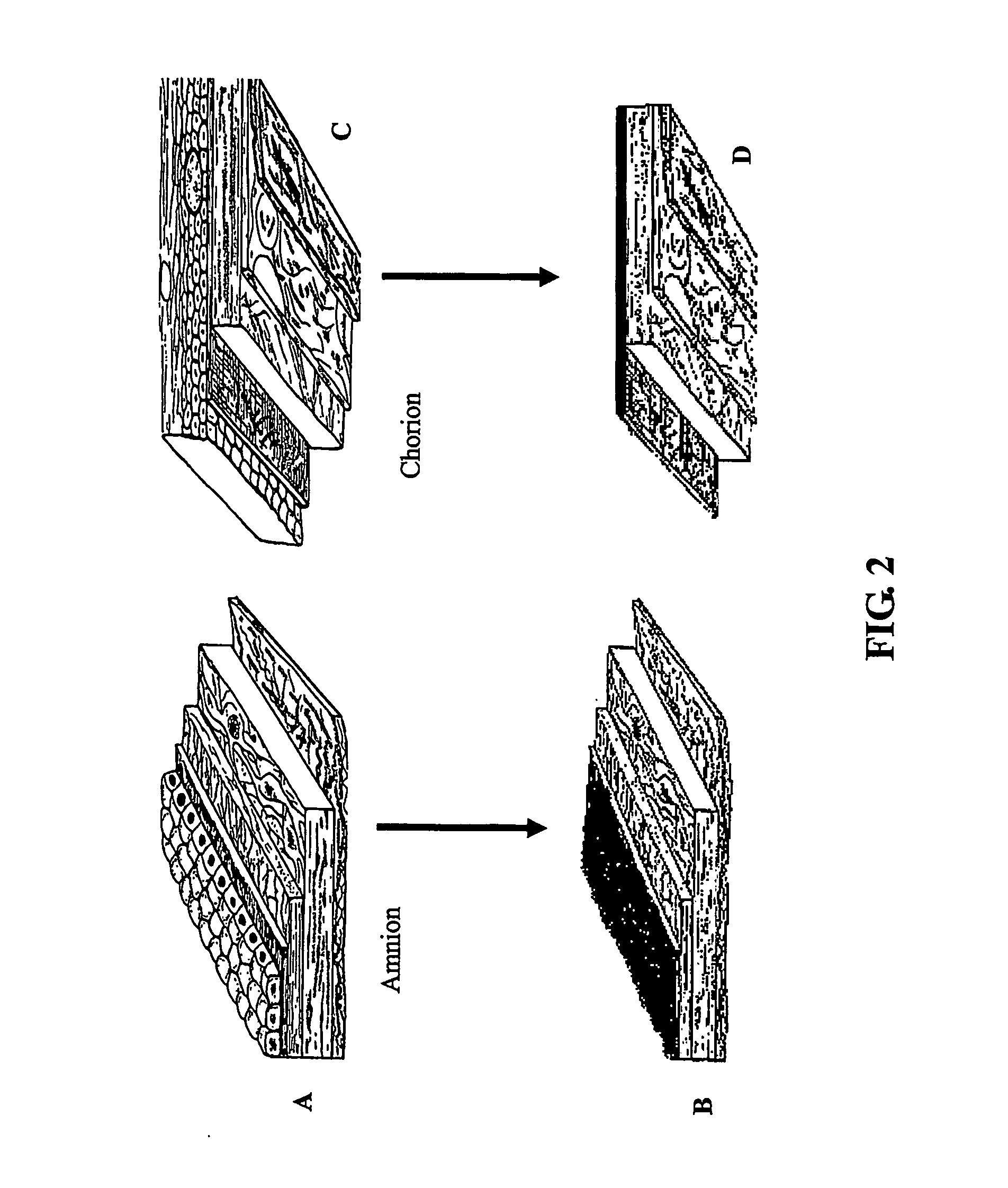Methods of preparing transplantable product for treatment of skin defects
a technology of skin defects and products, applied in the field of methods, can solve the problems of insufficient regeneration of newly formed epidermis, inability to use epidermal grafting, and often times lack of permanent repairing function of allogenic grafts, and achieve the effects of stimulating the proliferation of keratinocytes, slowing down the differentiation of keratinocytes, and promoting epidermal cell growth on skin wounds
- Summary
- Abstract
- Description
- Claims
- Application Information
AI Technical Summary
Benefits of technology
Problems solved by technology
Method used
Image
Examples
Embodiment Construction
[0046] In accordance with the present invention, a skin equivalent graft comprises three basic elements which consists of the epidermal cell sheet containing: 1. keratinocytes, 2. melanocytes; and a dermal cell sheet containing 3. fibroblasts and a supporting matrix membrane derived from an extraembroynic membrane. Keratinocytes can be derived from both allogeneic and autologous skin or hair follicles.
[0047] Keratinocytes in the graft comprises three basic cell types of stem cells, transient amplifying cells, and postmitotic differentiating cells. Stem cells and transient amplifying cells make up the proliferative pool of the epidermis. Stem cells are endowed with the potential to generate self-renewing tissues throughout its lifetime. A stem cell population can be detected by using the method in the invention as an indicator of the quality of the graft.
[0048] A new cell culture insert which is able to be assembled and un-assembled has been specifically designed for producing the ...
PUM
| Property | Measurement | Unit |
|---|---|---|
| diameter | aaaaa | aaaaa |
| diameter | aaaaa | aaaaa |
| diameter | aaaaa | aaaaa |
Abstract
Description
Claims
Application Information
 Login to View More
Login to View More - R&D
- Intellectual Property
- Life Sciences
- Materials
- Tech Scout
- Unparalleled Data Quality
- Higher Quality Content
- 60% Fewer Hallucinations
Browse by: Latest US Patents, China's latest patents, Technical Efficacy Thesaurus, Application Domain, Technology Topic, Popular Technical Reports.
© 2025 PatSnap. All rights reserved.Legal|Privacy policy|Modern Slavery Act Transparency Statement|Sitemap|About US| Contact US: help@patsnap.com



